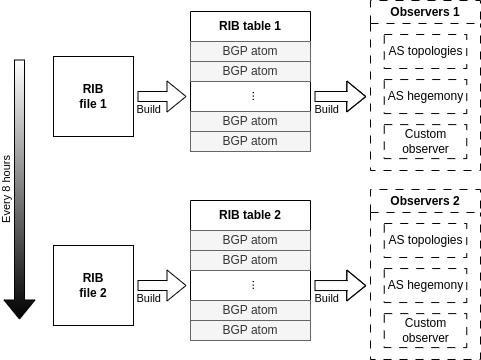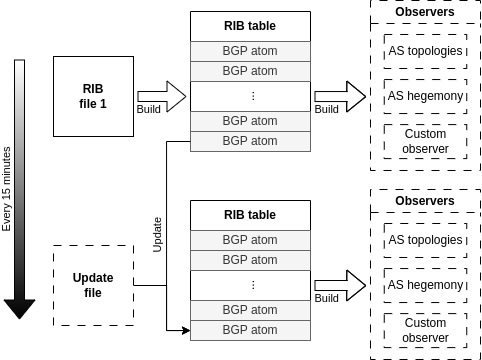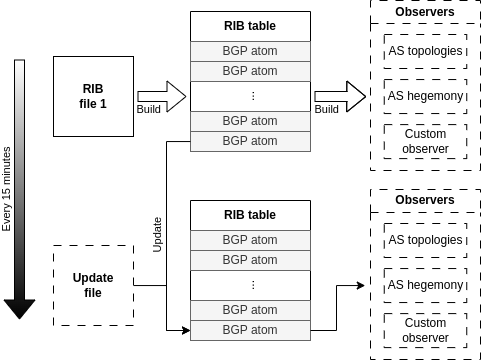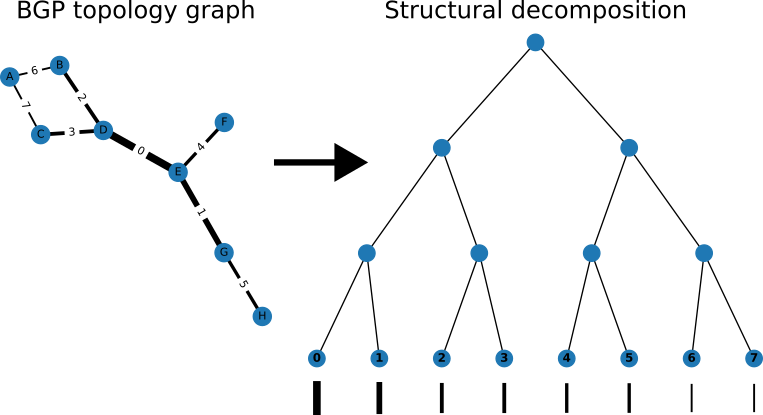Member: Justin Loye, Romain Fontugne
Category: Exploring
Tags: AS topology, BGP, temporal networks, anomaly detection
BGP Link Stream Analysis
- Background: BGP induced AS outages are regularly observed and have a societal and economic impact. BGP data is noisy and hard to analyze.
- Purpose: Detect BGP anomalies and explain their source
- Approach: I) Data collection and preprocessing: create high frequency and global-scale Internet topologies from BGP updates message; II) Data analysis: apply a multi-scale frequency-structure decomposition to characterize changes in BGP topology. Our detection pipeline have the advantage to be unsupervised, explainable and to work in near-realtime

QuickRIB: high frequency and global-scale Internet topologies from BGP updates message
We developed our tool to collect topologies’ data: QuickRIB, an open-source Python tool for efficient (re-)construction and analysis of BGP “routing tables”. In short, this project provide the following functionalities:
- Downloading and caching RIPE RIS and RouteViews MRT archives.
- Building an agglomerated RIB table from different collectors.
- Handling the updates in order to have a complete RIB at a higher frequency.
- Predefined analysis kernels called observers (e.g. topology graphs, AS paths count, …).
- Observers are easy to implement and cheap to update
Online repository: https://github.com/JustinLoye/quickrib
QuickRIB enables sub real-time analysis of global routing tables thanks to efficient handling of BGP updates. The following figures show how QuickRIB works:
Level 1: Basic RIB analysis
❌ Low resolution ❌ Long compute time

Level 2: Enhanced frequency with RIB reconstruction (BGPview-like)
✅ High resolution ❌ Long compute time

Level 3: QuickRIB, near realtime analysis with efficient observer updates
✅ High resolution ✅ Fast compute time

Apply a multi-scale structure decomposition of BGP graphs to study BGP outages
Apply a multi-scale structural decomposition to BGP graphs
We perform a Haar wavelet decomposition of the graph edge space to characterize the graph structure at several levels of resolution. The edge space is ordered by edge activity to capture the postulate: “a graph is anomalous when its the active parts become inactive and vice-versa”. We then perform a statistical test to assess if the current BGP graph Q is consistent to historical graphs H


Identify BGP graphs anomaly and relate them to BGP outages
We test our approach on 10 historical scenarios for both global-level outage and AS-level outage. The later allow our approach to be explainable
Global-level outage


AS-level outages Our method outperforms IODA BGP prefix visibility signal to detect route leaks


